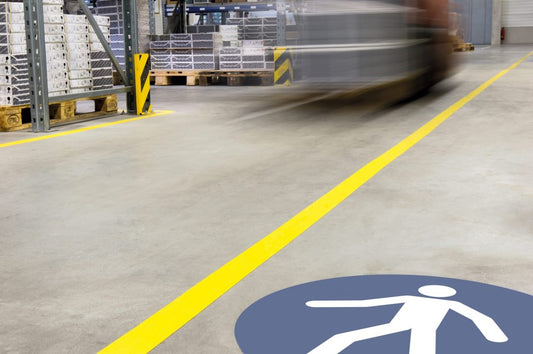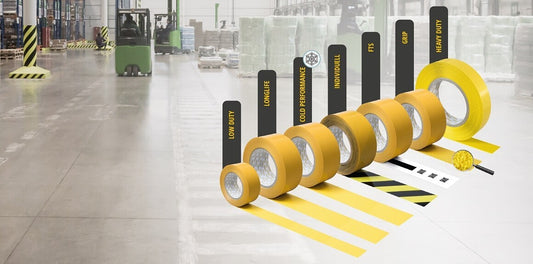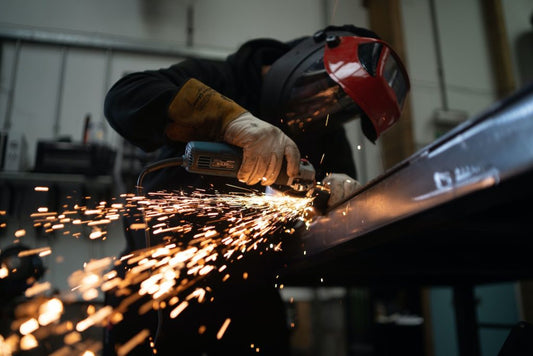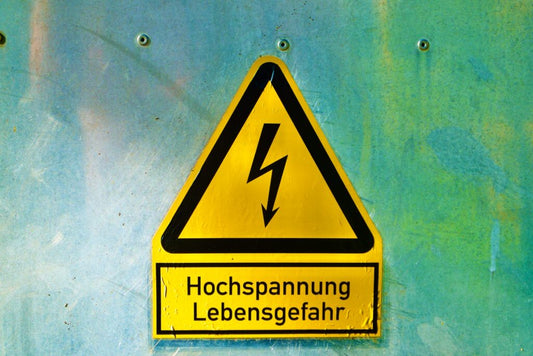If you work in the field of logistics or manufacturing, you might have heard about ‘Lean Management’ and ‘5S Methodology’ as methods to improve workplace efficiency. A key way to implement efficient change in these industries is through a process called ‘Red Tagging’. But what is Red Tagging, and how does it improve efficiency in the workplace?
Red Tagging is a process where members of staff add red tags to items in their workplace that they feel either no longer add value, are defective or are misplaced. It is then up to the management and staff to eliminate these items from their areas of work, reducing wasted space and effort.
Read on to find out more about 5S implementation with Red Tagging.
What is Red Tagging?
‘Red Tagging’ is a method used in the logistics and manufacturing industries where staff literally tag items or areas to show management that the item lacks value or usefulness. Once red-tagged, these items will be reviewed by management and staff for their effectiveness and useability in the workplace.
How Do You Red Tag Something?
Red tagging is as simple as adding a red piece of tape to an item that you believe is not adding value in its current place, or at all. On the tag, they will outline a reason for tagging, their name, and the item’s name, as well as the date of tagging. If the item is small enough to move, an employee can add it to a ‘red tag area’.
A red tag area is where you square off a small section of your workplace using floor markings where people can move items that are broken, defective or no longer serving a purpose. Once you have marked your red tag area, add signage so everyone in your workplace knows what the area is for.
Items placed in the red tag zone will stay there for a set period of time (from a week up to a month) before they are disposed of. This gives employees time to speak up if they actually need that tool or item. Items in the red tag area at the end of the set time frame either get donated, sold, or thrown away.
Creating a red tagging area is simple, and it shouldn’t take up too much of your workspace. Simply cordon off an area of the floor using floor tape out of the way so that the area itself doesn’t become a hazard.
Other Ways to Red Tag
Red Tagging is a great way to show intent in the workplace. To better communicate the desired outcome of an item, you might want to implement four tags or colours to display further intent. This might look something like this:
- Red - Rid
- Blue - Return
- Green - Reuse
- White - Retain
Using a standardised colour scheme will show workers what people think of the usefulness of that item. If something has been tagged, it should be the responsibility of someone else to dispute its usefulness. If something is tagged without dispute, then you have identified an object that adds no value in its current state.
Why Would You Want To Red Tag Something?
Red tagging is used when you want to improve your efficiency in the workplace by removing or moving items that no longer add value. You might mentally red tag items before moving house or going on holiday yourself. You may commonly refer to items that you would want to red tag as ‘clutter’.
Many things gather dust over a period of time and can often get in the way of the business's profits and goals.
Red Tagging and 5S Methodology
Red tagging is an aspect of 5S Methodology, which is an aspect of Lean Management. ‘Lean Management’ is a philosophy where businesses attempt to make themselves Lean - that is to say, less bulky - reducing wasted space, tools, effort and staff.
This reduction method comes from 5S Methodology, a technique invented and used by Toyota to streamline its production process.
The 5S’ are:
1. Sort
Items in the warehouse or workshop are arranged into three groups: retain, return, and rid. This way, a company can identify the materials it holds, where they are held, and whether or not they are needed.
Sort is the first step of the 5S program. The first S is really important to red tagging, as you are sorting your items through a tagging system.
2. Set in Order
During this step, companies will find a place for everything and ensure their position is clearly labelled and protected. ‘Set in Order’ is the next step once items have been sorted using the red tagging system.
3. Shine
‘Shine’ is an aspect of 5S that focuses on cleaning up areas and improving productivity. Once you have red tagged items, and cleared your workplace accordingly, you are encouraged to ‘shine’ and keep your everyday workspace clear of clutter. After all, the intended purpose of red tagging is to improve performance by creating clear and defined work areas.
4. Standardise
To effectively carry out your red tagging system, you need to make sure that it is understood throughout your business as standard. Red tagging is great for occasional improvements, but it is actually a component of continuous improvement.
Continuous improvement is a concept where a business strives to improve incrementally over time. It is through the process of continuous improvement that red tagging is best practised.
For more information on continuous improvement and its benefits to your industry, read: How To Create a Culture Of Continuous Improvement (+ The Top Benefits).
5. Sustain
‘Sustain’ is the final component of the 5S philosophy and the process of red tagging. Detailed review programmes monitor and fine-tune each of the steps of 5S to achieve this step. It is a reality of any programme that it must continually be reviewed for inefficiency and revised to be increasingly effective as time goes on.
What Tools Can Be Used To Red Tag?
Historically, a red sticker, piece of tape or an actual tag was actually used to red tag. Of course, you can use any method or colour that you wish. Keeping the colour of the tag the same colour is important, as it gives a clear signal to all workers that this item’s usefulness is being brought into dispute.
The main goal of red tagging is to visually communicate that an item is deemed counterproductive by a member of the workforce, which opens that item up for discussion about its usefulness at a later date.
Whilst Orgatex offers red tape for you to red tag with, you could also list the products for tagging on a whiteboard to clearly indicate your intent for an item. Once tagged, the items should be moved into a designated area where their usefulness can be debated.
Red Tagging with Orgatex
Orgatex is an industry-leading manufacturer and supplier of Lean Management systems that allow businesses to streamline their workloads. When considering implementing a red tag system, Orgatex has everything that a business needs to implement it successfully.
If you are looking to implement your own 5S programme or red tagging system for improved processes and efficiencies in your manufacturing operation, please feel free to get in touch for a no-obligation free-of-charge consultation.
Orgatex has everything that your business might need to help clear clutter and move forward. Read more about our methodologies, products and
Either fill out our contact us form or give us a call on +44 191 386 1240.












